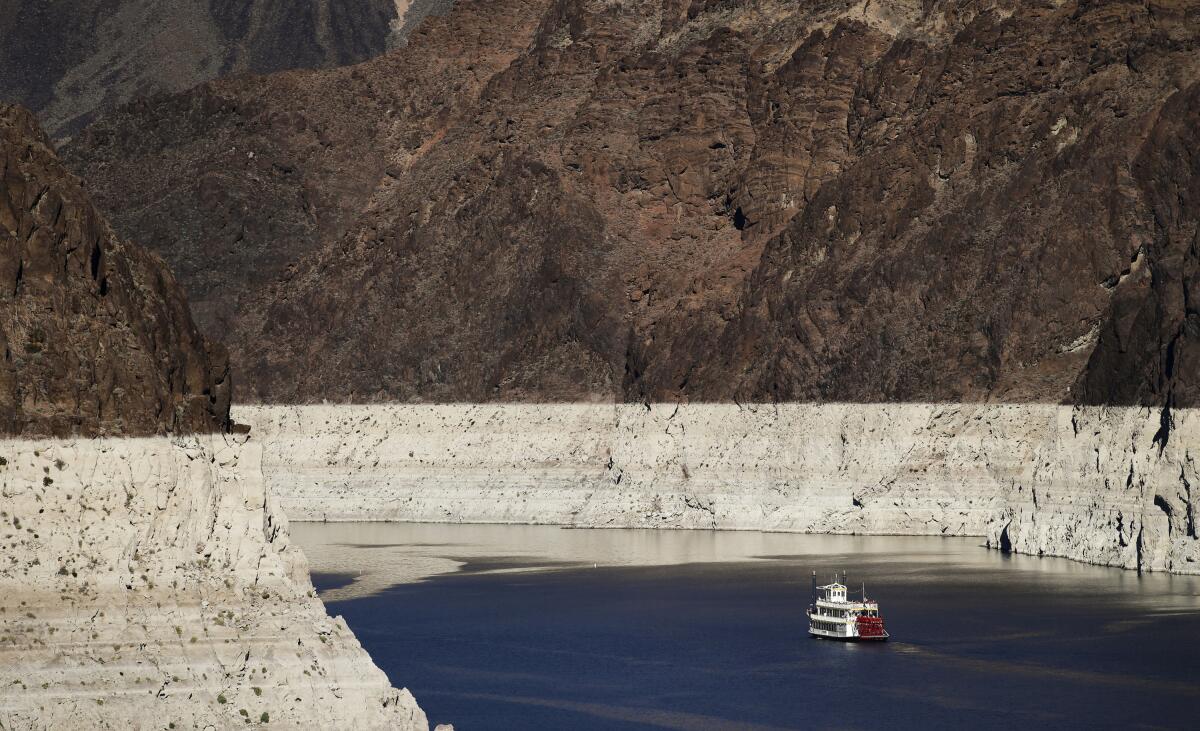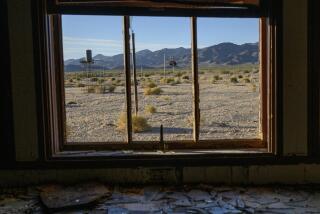Editorial: No, L.A. is not a desert. But we are getting there

- Share via
One of the standard tropes we hear from outsiders about Los Angeles is that it is located in a desert — a dry biome that cannot sustain our millions of people without importing water from somewhere (and someone) else.
And the standard retort from folks like us on the Los Angeles Times editorial board is that, no, it’s explicitly not a desert. To get to the desert, we have to leave town. The difference in climate, flora and terrain between L.A. and, say, Palm Springs or Las Vegas is profound. Deserts get less than 10 inches of rain a year. Las Vegas gets just over four. Los Angeles gets nearly 15.
We’re not a desert. We have a Mediterranean climate, like, say, the South of France. That’s our story and we’re sticking to it.
But there are a few caveats that we Southern Californians should discuss, just among ourselves.
The first is that, sure, we have a Mediterranean climate, but it more closely resembles what you’d find in the Med’s drier southern coasts than the lusher parts of Italy or France. Think Alexandria rather than Rome or Barcelona. So if we were going to adjust our water consumption to correlate to our rainfall, we’d be even stingier with our landscapes and showers than we currently are.
The second is that as the globe warms, southern climate patterns are creeping northward. So L.A.’s climate may come to more closely resemble northern Baja California’s: hotter and drier.
The third is that, yes, we import much of our water from wetter places like the Sierra Nevada and the Rockies, via rivers, dams and aqueducts. The engineering, construction and operations expertise that keep us from going dry are marvels and should be the subject of our pride and awe, despite the scolding we sometimes get from our Northern California neighbors. We should also be proud of the fact that as our population has grown over the last 30 years, our water consumption has not. And we should be pleased that our local reservoirs will keep us in good shape through the dry summer and into what we hope will be a wetter winter.
But those wetter places that help quench our thirst are changing too. The Rocky Mountain snowmelt that feeds the Colorado River and once filled Lake Powell behind Glen Canyon Dam in Arizona has diminished since the start of the 21st century, coinciding with the end of an unusually wet period in history. Further downstream, Lake Mead behind Hoover Dam on the Nevada-Arizona border reached its lowest level in history last month, both because of the drying Colorado River watershed and competing uses in increasingly populous Western states.
The Sierra snowcap was a small fraction of its historic size last winter. Much of Northern California is in severe drought. And just last month, a deadly heat storm struck those parts of the West that have always been considered the wettest — Washington, Oregon, British Columbia.
So the issue is no longer whether L.A. is a desert — whether it’s too dry to support itself with water. The question should be whether all those areas from which Southern California has drawn so much of its water over the last three-quarters of a century will be too dry to support themselves, let alone those of us in L.A.
Many great civilizations, including the Maya and Khmer empires, arose during wet periods in their history and thrived because of ingenious engineering and management feats that created steady, reliable water supplies. And it is widely believed that the fall of those empires coincided with climate changes that no longer accommodated the structures and systems they had built.
Like the rest of the globe, Southern California now faces a far more profound change in climate — one that could cut off Los Angeles from the water supplies that created it. To survive, and to thrive, we will have to use, clean and use again the water we have locally and be more parsimonious with the less-abundant water that we import. Otherwise, Los Angeles just might become a desert after all.
More to Read
A cure for the common opinion
Get thought-provoking perspectives with our weekly newsletter.
You may occasionally receive promotional content from the Los Angeles Times.










